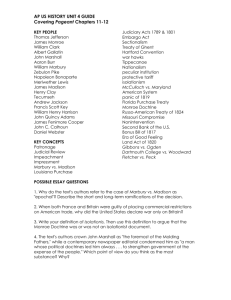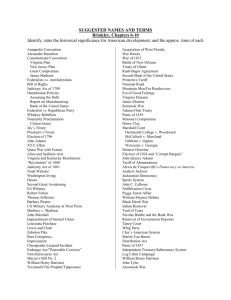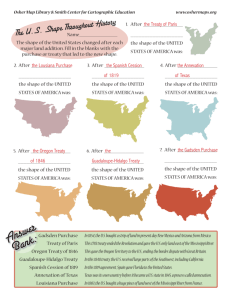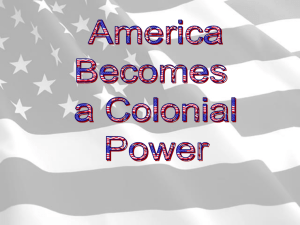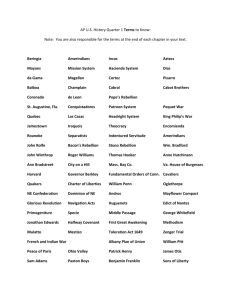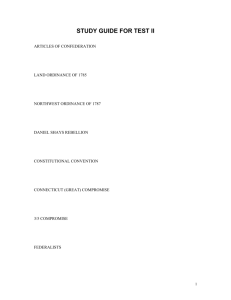Chapter 22 Notes
advertisement
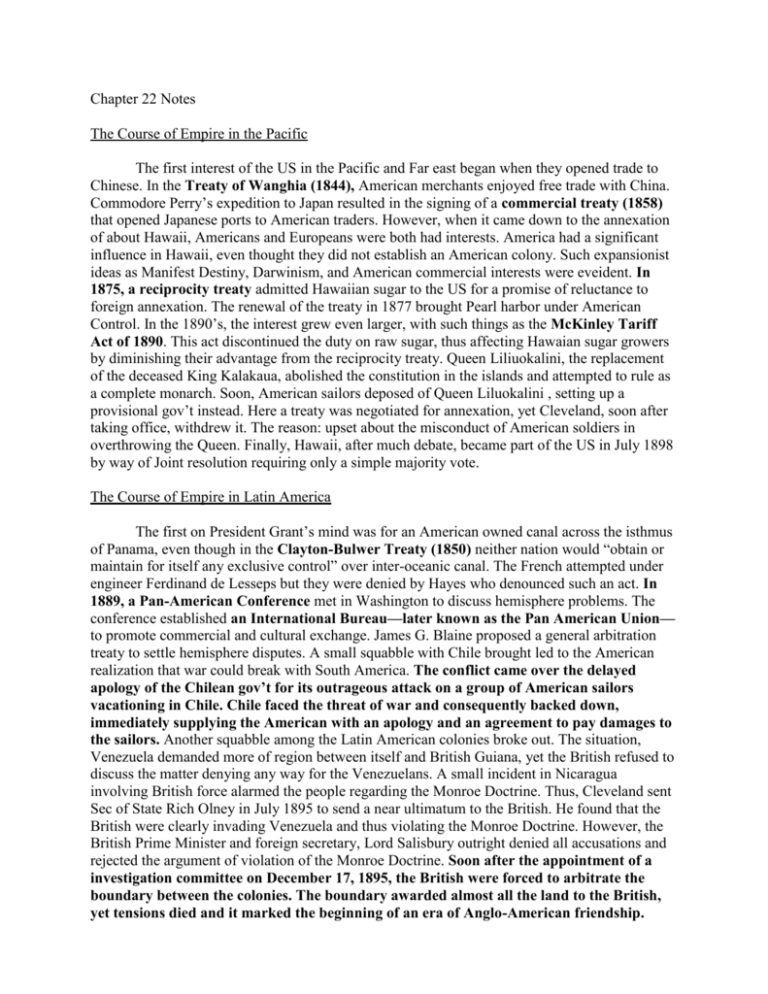
Chapter 22 Notes The Course of Empire in the Pacific The first interest of the US in the Pacific and Far east began when they opened trade to Chinese. In the Treaty of Wanghia (1844), American merchants enjoyed free trade with China. Commodore Perry’s expedition to Japan resulted in the signing of a commercial treaty (1858) that opened Japanese ports to American traders. However, when it came down to the annexation of about Hawaii, Americans and Europeans were both had interests. America had a significant influence in Hawaii, even thought they did not establish an American colony. Such expansionist ideas as Manifest Destiny, Darwinism, and American commercial interests were eveident. In 1875, a reciprocity treaty admitted Hawaiian sugar to the US for a promise of reluctance to foreign annexation. The renewal of the treaty in 1877 brought Pearl harbor under American Control. In the 1890’s, the interest grew even larger, with such things as the McKinley Tariff Act of 1890. This act discontinued the duty on raw sugar, thus affecting Hawaian sugar growers by diminishing their advantage from the reciprocity treaty. Queen Liliuokalini, the replacement of the deceased King Kalakaua, abolished the constitution in the islands and attempted to rule as a complete monarch. Soon, American sailors deposed of Queen Liluokalini , setting up a provisional gov’t instead. Here a treaty was negotiated for annexation, yet Cleveland, soon after taking office, withdrew it. The reason: upset about the misconduct of American soldiers in overthrowing the Queen. Finally, Hawaii, after much debate, became part of the US in July 1898 by way of Joint resolution requiring only a simple majority vote. The Course of Empire in Latin America The first on President Grant’s mind was for an American owned canal across the isthmus of Panama, even though in the Clayton-Bulwer Treaty (1850) neither nation would “obtain or maintain for itself any exclusive control” over inter-oceanic canal. The French attempted under engineer Ferdinand de Lesseps but they were denied by Hayes who denounced such an act. In 1889, a Pan-American Conference met in Washington to discuss hemisphere problems. The conference established an International Bureau—later known as the Pan American Union— to promote commercial and cultural exchange. James G. Blaine proposed a general arbitration treaty to settle hemisphere disputes. A small squabble with Chile brought led to the American realization that war could break with South America. The conflict came over the delayed apology of the Chilean gov’t for its outrageous attack on a group of American sailors vacationing in Chile. Chile faced the threat of war and consequently backed down, immediately supplying the American with an apology and an agreement to pay damages to the sailors. Another squabble among the Latin American colonies broke out. The situation, Venezuela demanded more of region between itself and British Guiana, yet the British refused to discuss the matter denying any way for the Venezuelans. A small incident in Nicaragua involving British force alarmed the people regarding the Monroe Doctrine. Thus, Cleveland sent Sec of State Rich Olney in July 1895 to send a near ultimatum to the British. He found that the British were clearly invading Venezuela and thus violating the Monroe Doctrine. However, the British Prime Minister and foreign secretary, Lord Salisbury outright denied all accusations and rejected the argument of violation of the Monroe Doctrine. Soon after the appointment of a investigation committee on December 17, 1895, the British were forced to arbitrate the boundary between the colonies. The boundary awarded almost all the land to the British, yet tensions died and it marked the beginning of an era of Anglo-American friendship.

